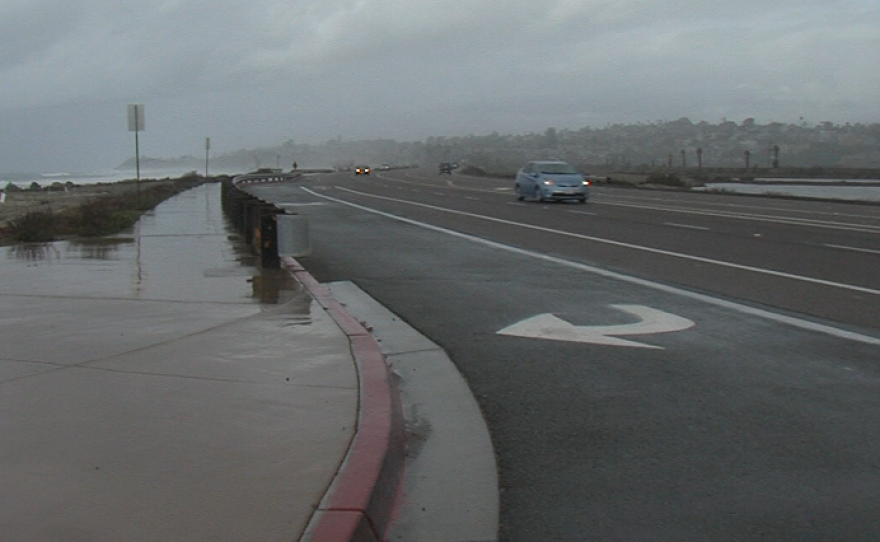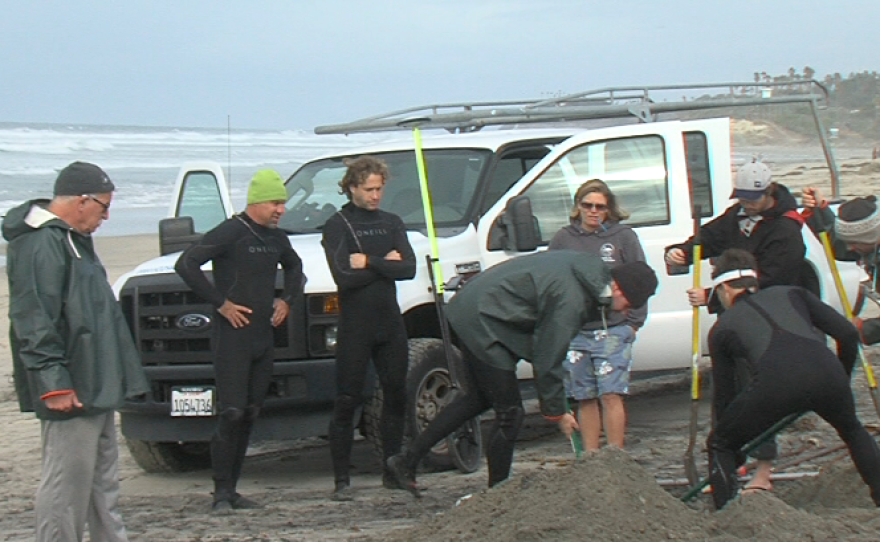A San Diego scientist from the Scripps Institution of Oceanography is taking advantage of this week’s storms and high tides to test his models of sand movement on San Diego beaches.
Researcher Bob Guza was out Wednesday in Cardiff with his team from Scripps burying sensors in the sand.
“These sensors are going to be measuring the water depth and the height of waves,” Guza explained. “The sensor basically weighs the height of the water. If it’s tall, it’s a heavy weight, and so we watch the weight or the pressure go up and down.”
Guza, a professor emeritus of oceanography, was in Encinitas because Highway 101 runs right past the beach in Cardiff, and the storms and high tides this week may lift the ocean over the road.
It’s happened before. In the 1980s and 1990s, during unusually high tides combined with stormy weather, the ocean washed over the road and flooded the parking lots along what's known as Restaurant Row.
Guza wants to measure what happens with the high tides on Thursday and Friday morning.
“We’re anticipating that the water may rush all the way up to the riprap and the rocks bordering Highway 101 here, and even get onto the highway. We’re not sure,” Guza said. “But what we’re doing is measuring the waves as they come ashore (and) run up the beach, and how high up do they get."
Unlike many North County beaches, Cardiff's is still sandy. It has not been washed down to rocks. That’s likely due to a big infusion of sand back in 2012 that was part of a $28 million regional sand replenishment program funded by the San Diego Association of Governments.

Guza has studied several San Diego beaches — from Imperial Beach to Encinitas — for more than seven years. The buried sensors show how sand migrates with wave action, and this data helps him understand how the replenishment programs are working.
He said the models cannot yet reliably predict how sand will move. But Guza said he is excited about the coming El Niño because he believes it could give us a glimpse into the future.
“The reason I say that is because sea level is higher during El Niño because of the wind patterns and because the water is warmer. So the water level is higher, maybe 15 or 20 centimeters. That may be, depending on sea-level rise, the equivalent of 30 or 40 or 50 years of sea-level rise.”
What happens this winter, Guza said, may help researchers understand how sea-level rise will affect our communities in coming decades.






